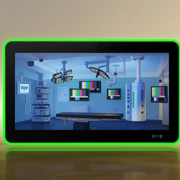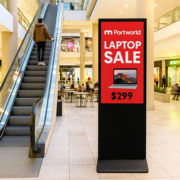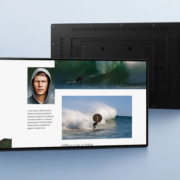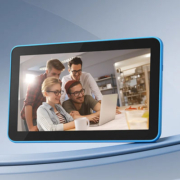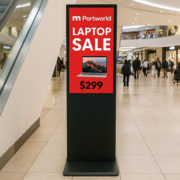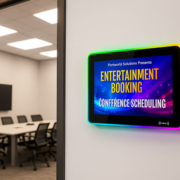How Does Digital Signage Work?
Digital signage is a powerful and increasingly popular way for businesses and organizations to communicate visually with their audiences. From interactive retail kiosks to airport flight information displays, digital signage transforms traditional static messaging into dynamic, real-time, and engaging visual content.
But how exactly does digital signage work?
The Core Components of Digital Signage
To understand how digital signage works, it’s helpful to break it down into four key components:
1. The Display (Screen/Tablet/Monitor)
This is the visual interface—the screen that shows the content. It can be:
- A commercial-grade LCD or LED screen
- A wall-mounted Android/Linux tablet (like Portworld’s YC Series)
- A large-format digital billboard
- A touchscreen display for interactivity
Example: Portworld’s YC-215OB uses a 32” optical bonding screen for enhanced clarity and durability.
2. The Media Player or Built-In Player
The digital signage player is the engine that powers the content on the display. It could be:
- An external box connected via HDMI
- A built-in Android/Linux system on a smart tablet
- A mini-PC or OPS module embedded in the display
The player runs the operating system (Android, Linux, or Windows) and communicates with the software platform to download, store, and display content.
Devices like Portworld’s YC-2701T include RK3566 processors and built-in media players with WiFi, Bluetooth, and PoE.
3. The Content Management System (CMS)
The CMS is the software platform used to manage and schedule content across multiple displays. It allows users to:
- Upload images, videos, or HTML5 content
- Create playlists and set schedules
- Push content to one or multiple screens
- Monitor screen status remotely
CMS platforms can be:
- Cloud-based (access from any browser)
- On-premise (installed on local servers)
- Custom-built, as offered by Portworld for OEM/ODM solutions
4. The Network Connection
To update and control content remotely, digital signage systems rely on a network connection, which could be:
- Wi-Fi
- Ethernet (LAN)
- 4G/5G
- Power over Ethernet (PoE), which transmits both power and data through a single cable
This connection ensures that the screen can:
- Receive content updates
- Sync with other devices
- Send performance or playback data back to the CMS
How It All Comes Together: Step-by-Step
-
Create Content
Using a CMS, marketers or admins design content such as promotional ads, menus, announcements, or informational dashboards. -
Schedule & Distribute
The content is scheduled (e.g., weekdays from 9 AM–5 PM) and sent to the appropriate screens via the internet or a local network. -
Playback on Display
The media player (built-in or external) downloads the content and plays it on the screen based on the set schedule. -
Monitor & Optimize
Most digital signage software lets users monitor screen uptime, playback history, and even remotely troubleshoot or restart devices.
Use Case Examples
| Industry | Use Case |
|---|---|
| Retail | Advertising seasonal sales, product tutorials, or digital price tags |
| Hospitality | Interactive concierge displays, hotel check-in kiosks |
| Healthcare | Patient queue displays, health tips, wayfinding |
| Education | Campus news, event reminders, digital timetables |
| Transportation | Real-time schedules, weather alerts, platform directions |
Advanced Features in Modern Digital Signage
Today’s systems go beyond just showing a video. Features may include:
- Touch interaction for kiosks and self-service
- Facial recognition for targeted ads
- NFC/RFID readers for secure access or check-ins
- Multicolor LED frames to indicate status (available in Portworld’s YC-L156)
- Offline playback when the network is temporarily down
Why Choose an Integrated Solution like Portworld?
Portworld provides all-in-one smart digital signage tablets with:
- Android/Linux OS built-in
- RK3566/RK3568 processors
- Full HD or 4K displays
- Capacitive touch
- PoE power supply
- OEM/ODM customization + optional CMS
This eliminates the need for separate media players and simplifies installation—especially beneficial for retail chains, smart buildings, and system integrators.

